
Showstoppers
These 10 items stood out among thousands showcased at the PGA Merchandise Show in Orlando earlier this year.
The Iron
Hitting through Titleist’s T-series of irons feels revelatory. The T400, which is designed to offer maximum distance while helping players with moderate swing speeds hit higher-launching shots, isn’t off-putting despite its hefty overall appearance. Even when venturing into less-forgiving territory with Titleist’s tour-quality variants—the T100 and T100s—decent players will discover that the consistency of their ball striking isn’t compromised. Titleist’s lead product, the T200, is best described as a player’s distance iron and represents the brand’s commitment to designing small irons that play big. Featuring an incredibly thin clubface and polymer core, the T200 is further enhanced by high-density tungsten weights placed in the heel and toe of mid and long irons. That perimeter weighting helps the clubface return more energy to the ball, which produces more consistent distances, especially on off-center strikes. From $125; titleist.com

The Driver
Known mostly for its specialty shafts, Japanese brand Yonex proves it can also create an exceptional turnkey product with the release of its Ezone GT driver, a club that delivers exceptional performance in a no-frills, streamlined package. The CNC-milled vertical grooves on the driver’s clubface, which promote straighter spinning shots, are the only visible evidence of the club’s advanced design. The majority of that engineering is concealed from view. The underside of the crown, for example, is equipped with four wide grooves that are reinforced with a revolutionary graphite that reduces the clubhead’s weight and increases ball speeds. The interior of the clubface is also enhanced by grooves (as is the sole of the club), creating a deeper center of gravity and widening the club’s sweet spot. The driver is available in two sizes: 455cc for players with slow swing speeds and 435cc for those who swing faster. yonexusa.com

The 3-Wood
Some players might exclusively use a 3-wood in place of their driver, or reach for it occasionally on the tee box. But all amateurs would use it more often if hitting it off the deck weren’t so challenging. Callaway’s Mavrik Max Fairway Woods solves this problem. Designed with a lowered leading edge, which flattens the sole to promote better turf interaction, the Max 3-wood features a distinctive clubface created with the use of artificial intelligence. That face design, which differs subtly from Callaway’s other Mavrik 3-wood models, maximizes ball speed when contact is made low on the face—a common occurrence when most amateurs mishit their shots from the fairway. The Mavrik Max 3-wood delivers higher-launching shots and is designed with a draw bias, while the Mavrik Max 3+ is designed with a stronger loft and is neutrally weighted, making it the ideal club for players who don’t suffer from a slice and who naturally hit the ball high. From $300; callawaygolf.com

The Contemporary Putter
The feel of a putter is intensely personal, and while softness is in vogue, it’s not the only option on the market. Ping’s Heppler line of putters utilize machined flat faces in either aluminum or steel, delivering “flat sticks” with a firm feel that produce a corresponding firm sound at impact. They’re the ideal putter for players who seek sensory feedback in all forms. Like Ping’s previous family of Sigma 2 putters, Heppler models are equipped with a shaft that can be adjusted in length, in quarter-inch increments from 32–36 inches. Unlike the Sigma 2 lineup, the Heppler range includes a few new model designs, the most striking of which is the TomCat 14. It was inspired by runway lights and features 14 painted white dots to promote better eye-tracking and to frame the ball during the putting stroke. The club’s unique shape—a product of a new pressure-casting construction process—makes it the highest-MOI model in the family. $245–$270; ping.com
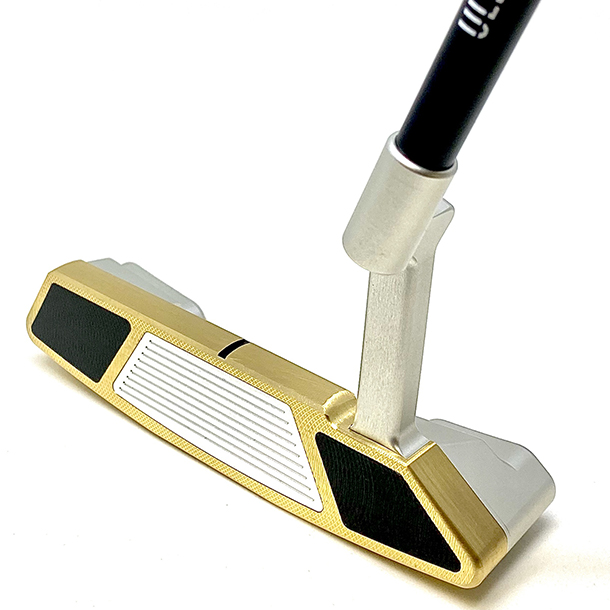
The Classic Putter
There’s an adage about the best things in life being worth the wait, and it applies to Sacks Parente’s Series 66. The brand’s co-founder, Steve Sacks, acknowledges that this particular putter, a cavity-back flange blade, is one that he would have liked to unveil when he and Rich Parente launched the company in 2018. Instead, they debuted with the Series 39, which allowed them an additional 18 months of R&D to further refine and elevate their Series 66 design. Leveraging the divergent densities of brass and aluminum—two metals used in the clubhead—as well as tungsten weights in the heel and toe, Sacks and Parente created a putter with plenty of MOI-assisted forgiveness and an unbelievably soft feel. The design may look like the Anser model that Ping unveiled in 1966, but it’s light-years ahead of the classic in terms of technology and performance. From $480; sacksparente.com

The Mobile Coach
For most amateurs, practice sessions at the range don’t lead to huge improvements. The Rapsodo Mobile Launch Monitor aims to change that. Utilizing state-of-the-art radar technology and the camera in a player’s smartphone, the device captures video of a golfer’s swing as well as ball flight data and other swing metrics (carry distance, ball and club speeds, smash factor, launch angle). The device tracks approximately the first 30 percent of a shot, uses multiple algorithms to project the ball’s journey, and presents this in shot-tracer format on the video. Every recorded swing is stored in the app, which allows players to review their individual swings and shot statistics. The device even includes satellite range mapping, which allows golfers to contrast the location and distance of shots hit with every club in their bag. $500; rapsodo.com
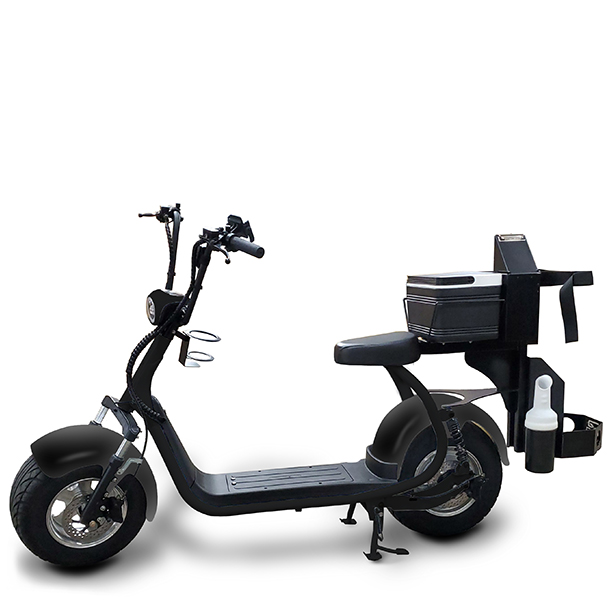
The Cart Alternative
When Phat Golf debuted its scooter at the PGA Merchandise Show three years ago, alternative, two-wheeled golf vehicles were a novelty. Since then, the single-rider category has blossomed and Phat Golf continues to lead the pack. Propelled by a 2,000-watt motor, the 2020 HD Golf model delivers 70 ft lbs of torque, which allows the scooter to traverse hills with inclines as steep as 25 degrees. The model can also reach speeds of 20 mph, while its 72-volt battery boasts a range long enough to complete at least two full rounds of golf, provided riders keep their pace to around 13 mph. $3,495; phatgolfscooters.com

The Swing Assist
The greatest challenge for most golfers is staying on plane through the entire swing. The Tour Striker PlaneMate, a new training aid designed by PGA of American instructors Martin Chuck and David Woods, can instill those proper mechanics. The PlaneMate is worn like a belt with a tension band that connects about a third of the way up a golf club’s shaft, and it trains a player to understand where and how they should feel tension during the backswing, as well as where and how that tension should be relaxed during the transition and also through the downswing. While the PlaneMate looks intimidating, golfers can use it on their own with the help of a seven-day protocol video series. Four-time major champion, Rory McIlroy, was seen using one on the range in the fall. $163; tourstriker.com
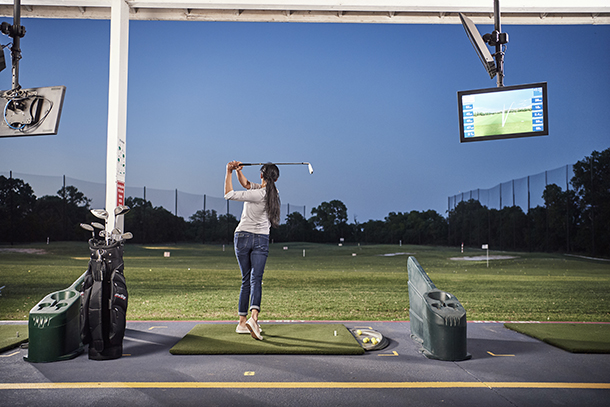
The Driving Range Enhancement
Designed by the company that created Topgolf, Toptracer Range utilizes some of the same technology behind the shot-tracing features that enhance television broadcasts of the PGA Tour. The system, which can be installed at public and private driving ranges, elevates the experience by adding motion capture cameras and interactive game screens. At Toptracer Range facilities, golfers can play virtual rounds of golf on famous courses, they can play closest-to-the-pin games, they can participate in long-drive contests, or they can simply practice as they typically would, only now all of their shots are traced and data is tracked and shared. toptracer.com
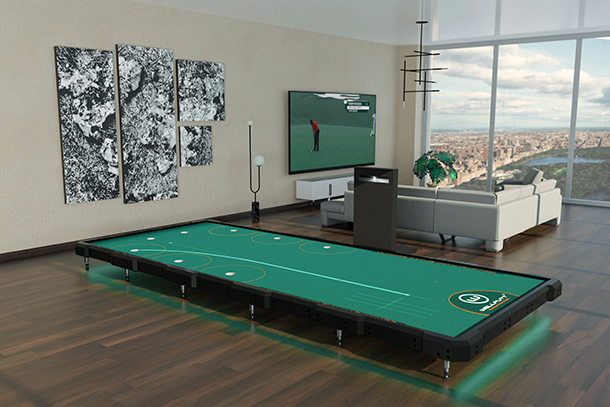
The Putt Trainer
The Wellputt Big Tilt Platform will make you a better putter. That’s a guarantee. The platform is equipped with a mechanical system (operated through a smartphone app) that quickly and silently raises the platform’s two longest sides, creating uneven putting conditions with as much as 5 percent of slope. An optional video projector can display lit tracks to show optimal, conservative, and aggressive paths to the hole (dependent on ball speed), and the aforementioned smartphone app includes more than 150 training exercises created in partnership with Cameron McCormick, the longtime coach of PGA pro Jordan Spieth. Mats constructed to replicate different green speeds are interchangeable. With its low profile and surface area measuring 17 feet long and just over 7 feet wide, the platform requires no more interior space than a standard billiards table. From $9,500; wellputt.com

Second Rounds
A closer look at five not-to-be-missed courses flying under the radar at the country’s top golf resorts.
You would not book a golf trip to California’s Monterey Peninsula and skip a round at Pebble Beach Golf Links. Nor would you hit up South Carolina’s Hilton Head for the first time without playing Harbour Town. Yet at some of the country’s top golf resorts, exceptional courses are hiding behind the headliners, primed to deliver memorable experiences and copious amounts of fun.
Sea Pines Resort
The scene-stealing course at Sea Pines Resort is Pete Dye’s masterpiece Harbour Town Golf Links, which hosts a PGA Tour event every spring. The 7,099-yard layout emphasizes shot-making to such a degree that even good drives fall out of position if tee shots don’t come to rest in the right portion of the fairway. “This is a course for shotmakers—a thinking man’s golf course,” says John Farrell, the resort’s director of golf. “Here, it is a good idea to take a look at where the hole locations are before you hit your tee shot. This course forces you to play like the pros play—not just where the pros play. You’ll be challenged in ways that you’re not always challenged, and likely will use every club in your bag.”
By contrast, the resort’s oldest course—renamed Atlantic Dunes—is now its newest course, thanks to a hard reset by Love Golf Design, owned by brothers Mark Love and Davis Love III. “We didn’t try to outdo Harbour Town [in terms of difficulty],” says Davis, a 21-time PGA Tour winner. “A big theme was to keep it friendly. We tried to open it up.” As a result, landing areas in the fairways are expansive and the green complexes are twice—sometimes three times—as large as what players will encounter on Harbour Town. Moreover, putting surfaces are noticeably contoured, which adds difficulty for good players, but can provide the occasional lucky bounce for those who need it. “A little bit of movement makes it more challenging for the good player,” says Mark, “and more interesting and fun for everyone.” seapines.com

Whistling Straits
Next September when the Ryder Cup is contested at Whistling Straits in Wisconsin, the world will be reminded of The Straits course’s inherent difficulty—due to blustery winds that whip off Lake Michigan, as well as the layout’s psychologically unnerving, links-inspired terrain created by Pete Dye. “The Straits is all about making you visually uncomfortable,” says Dirk Willis, the VP of golf at Kohler, which owns the American Club resort and its two affiliated golf properties, Whistling Straits and Blackwolf Run. “It throws off your depth perception. There’s a degree of uncertainty with every shot you have to hit.”
Golfers flock to The Straits, which has famously hosted three PGA Championships in the past 16 years; but they would be remiss to not also play the neighboring Meadow Valleys course at Blackwolf Run, another Pete Dye design with a back nine that all the resort’s resident golf pros consider to be the best nine-hole stretch across all four Kohler-owned courses. “Visually, it’s beautiful,” says Willis. “There’s a lot of undulation and elevation change within the holes. There’s a great variety of tee shots and approach shots, and great variation of risk-reward holes. The fairways are generous, but there is still great drama for the good player. It keeps your interest the entire time.” americanclubresort.com
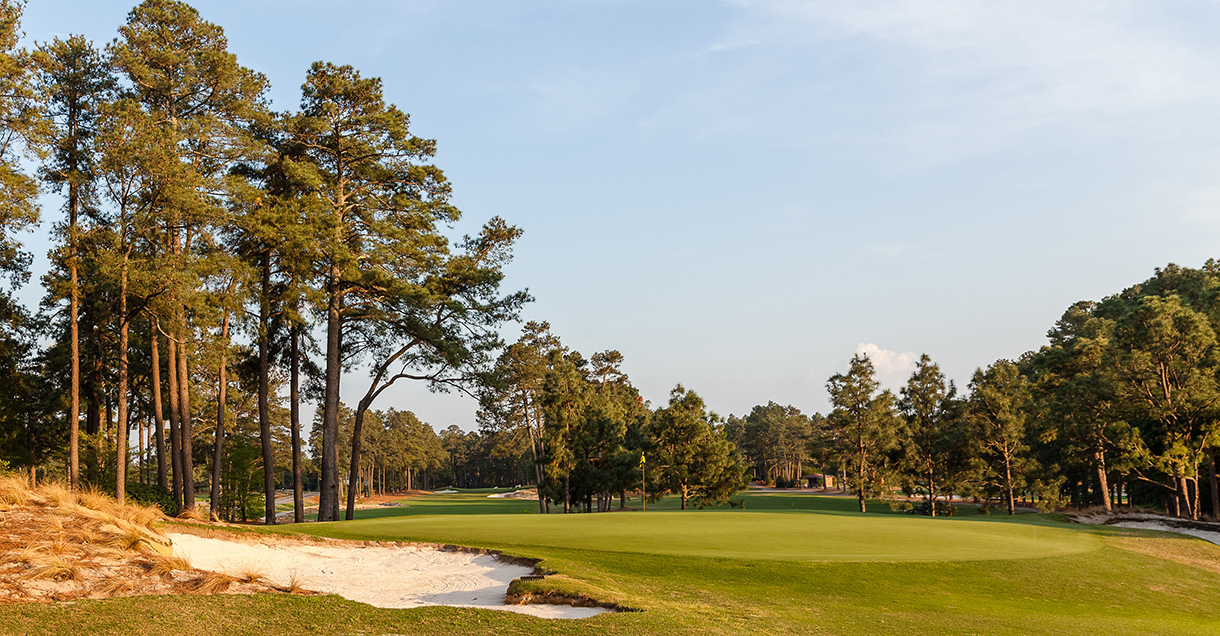
Pinehurst Resort
Predictably, Pinehurst Resort’s No. 2 course—having hosted several US Opens and US Amateur Championships, not to mention the Ryder Cup and a PGA Championship—draws golf enthusiasts to the sand hills of North Carolina in spades. Since its 2010 restoration (led by Bill Coore and Ben Crenshaw), the championship course has been described by golf’s leading trade publications as “spectacular” and “tremendous”; however, its turtleback green complexes, with their sloped edges, are as challenging as any in golf. Putts hit a fraction too hard can easily roll entirely off the greens, as can ideal-looking approach shots if they catch one of those slopes. Needless to say, a round on No. 2 can be as frustrating as it is exhilarating.
For that reason, Matt Barksdale, Pinehurst’s head golf pro, recommends that visitors first play the No. 3 course. “No. 3 is like the little brother of No. 2,” he says of the course, which plays only 5,155 yards long with a par of 68. Recently renovated (and restored to designer Donald Ross’ original intentions), No. 3 plays firm and fast—like No. 2—and its greens are similarly contoured. Yet, because the holes are shorter, players will likely be hitting approach shots with short irons or wedges, which makes those greens less daunting. “Playing No. 3 gets you thinking about how you need to approach the championship course,” Barksdale says. “It doesn’t have the length of the US Open course, but the strategic design philosophy of Ross is evident in both.” pinehurst.com
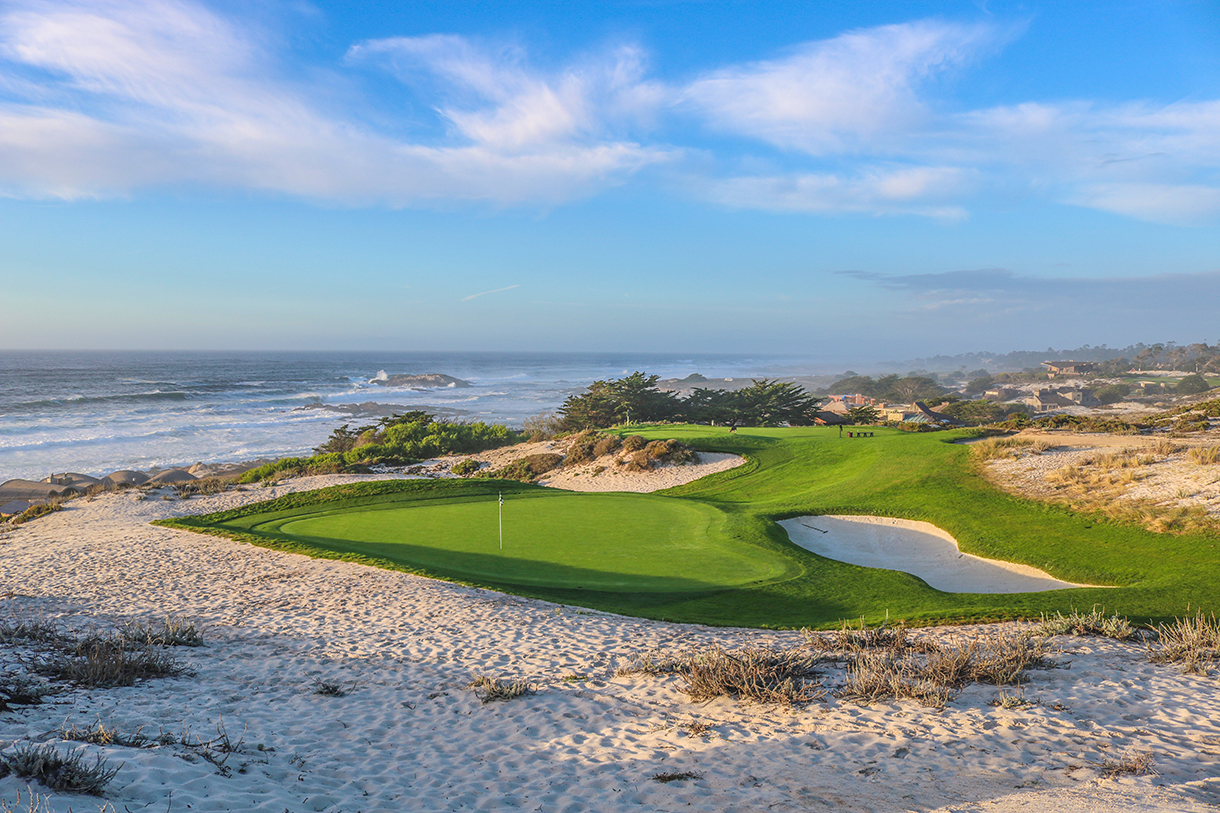
Pebble Beach Resort
When avid golfers come to Pebble Beach, they do so, first and foremost, with dreams of playing the resort’s eponymous, century-old Pebble Beach Golf Links. The famous seaside course has hosted six US Opens, as well as an annual star-studded PGA Tour pro-am event, now in its eighth decade of existence. Teeing it up on the course, which wraps itself along the coast of Stillwater Cove and Carmel Bay, is a bucket-list experience.
And yet, many would argue that Spyglass Hill deserves recognition as Pebble Beach’s premier course. Conceived by Robert Trent Jones Sr. (in collaboration with the Northern California Golf Association) in 1966, the design of Spyglass Hill was influenced by two iconic, exclusive East Coast courses: Pine Valley and Augusta National. “You’re out there in these backwoods and it’s like it’s its own world,” says Casey Boyns, one of the resort’s longest-tenured caddies. “It’s a different feeling and a different vibe,” he adds of the course, which opens in the sand dunes just off 17 Mile Drive and later transports golfers up into the hills of Monterey Peninsula. “It’s quieter.”
In addition to being an idyllic refuge teeming with wildlife (especially blacktail deer), Spyglass Hill claims sanctuary from the wind. “On really windy days, you want to be playing Spyglass,” Boyns reveals. “Once you head into the trees, the wind won’t be that big of a deal. But on windy days at Pebble, you almost have no chance.” pebblebeach.com

PGA National
This past February, during the annual Honda Classic, 144 of the world’s best professional golfers teed up on The Champion Course at PGA National Resort & Spa; yet only 16 of them finished the PGA Tour event under par. The championship layout becomes a minefield for the pros when the winds pick up, as they did earlier this year. On the other hand, the 7,048-yard course can be hazardous (pun intended) to most amateurs’ scorecards all the time, since almost 90 percent of the holes bring water into play.
Meanwhile at The Palmer course, water hazards still feature prominently, but the course looks and feels unlike any other at the resort. The 7,077-yard layout, designed by Arnold Palmer in 1984 and recently restored and gently redesigned by the Arnold Palmer Design Company, maintains a unique aesthetic. “It has a lot of character and it’s got some of the prettiest views on the property,” says Jane Broderick, the club manager at PGA National. “There are challenging natural grass areas; fairway mounding; and [the holes] aren’t simple doglegs left and right. It’s also a links-style golf course where the nines don’t return. That makes it very unique for south Florida.”
As for when to play, Broderick recommends a tee time that allows golfers to finish near the end of the day. “Playing down number 18 of The Palmer at sunset is absolutely spectacular,” she says. “You’re coming down this beautiful fairway, you’re looking back at the resort, and the sunset behind it just lights up the sky.” pgaresort.com —S.T.




